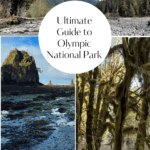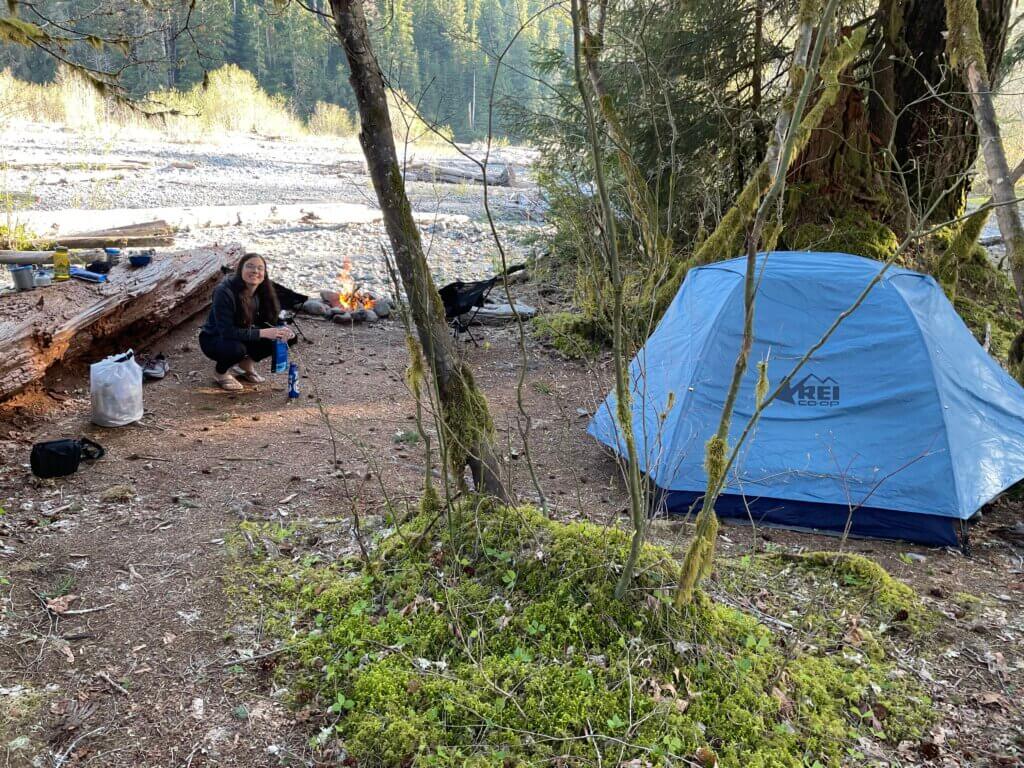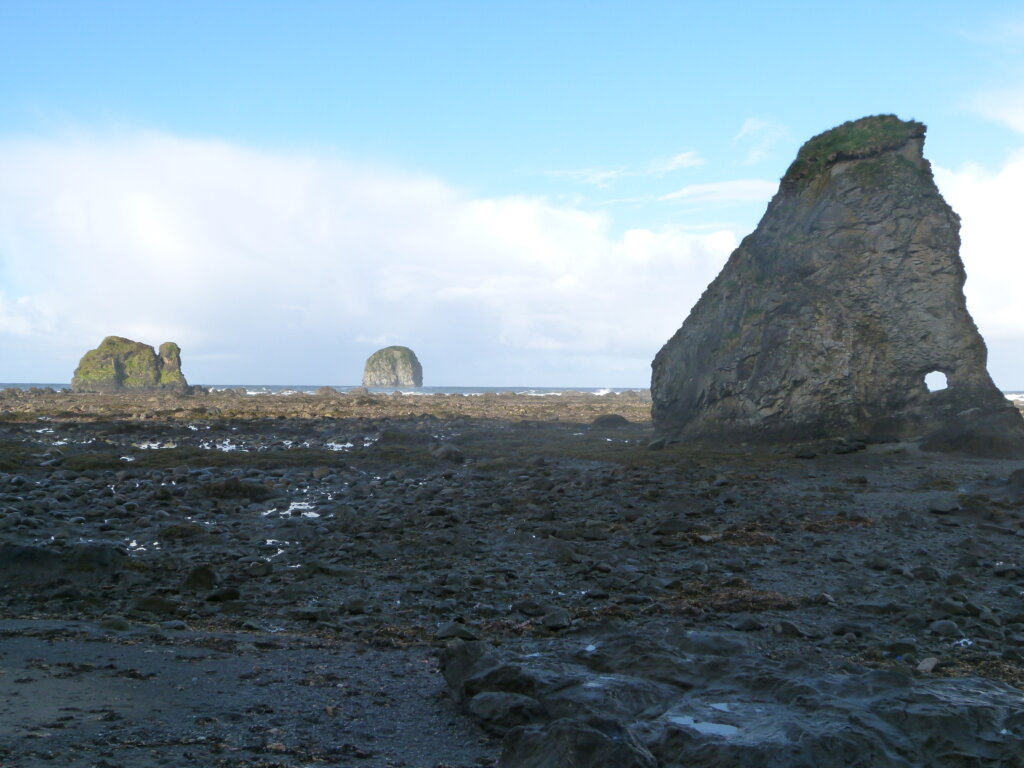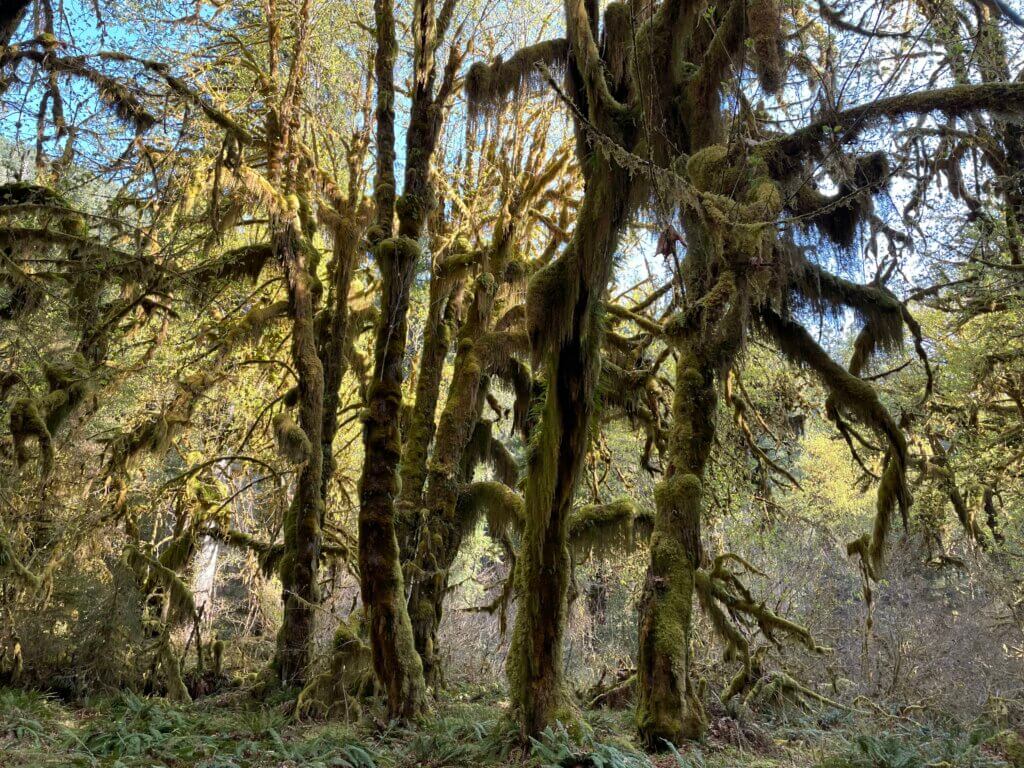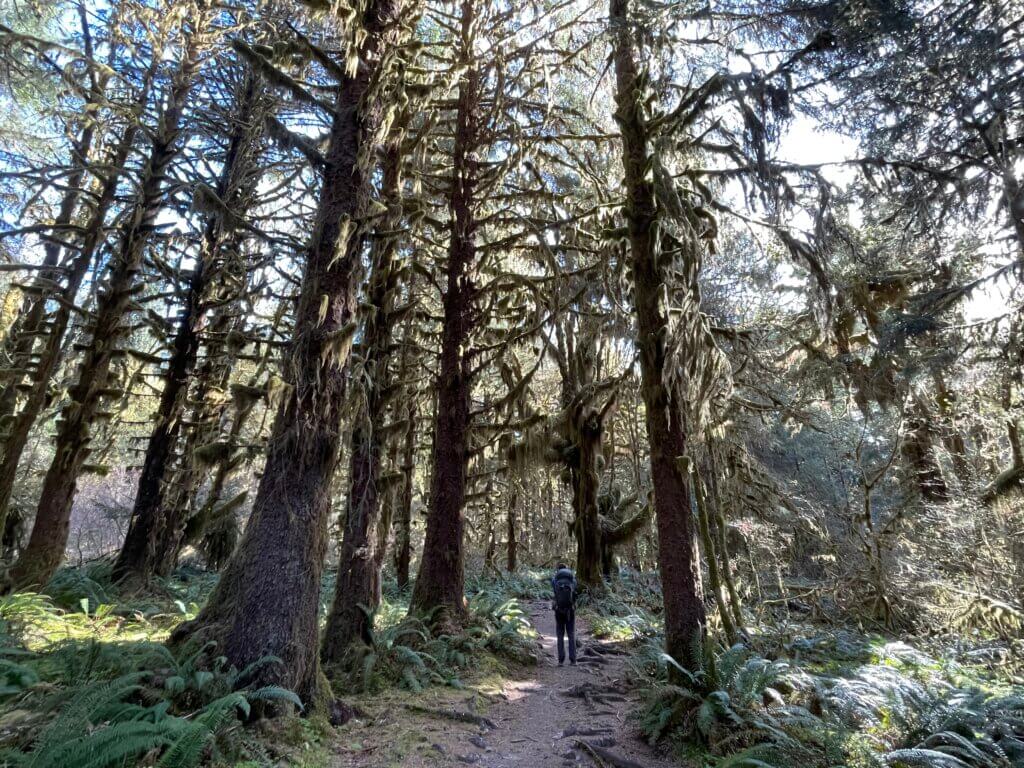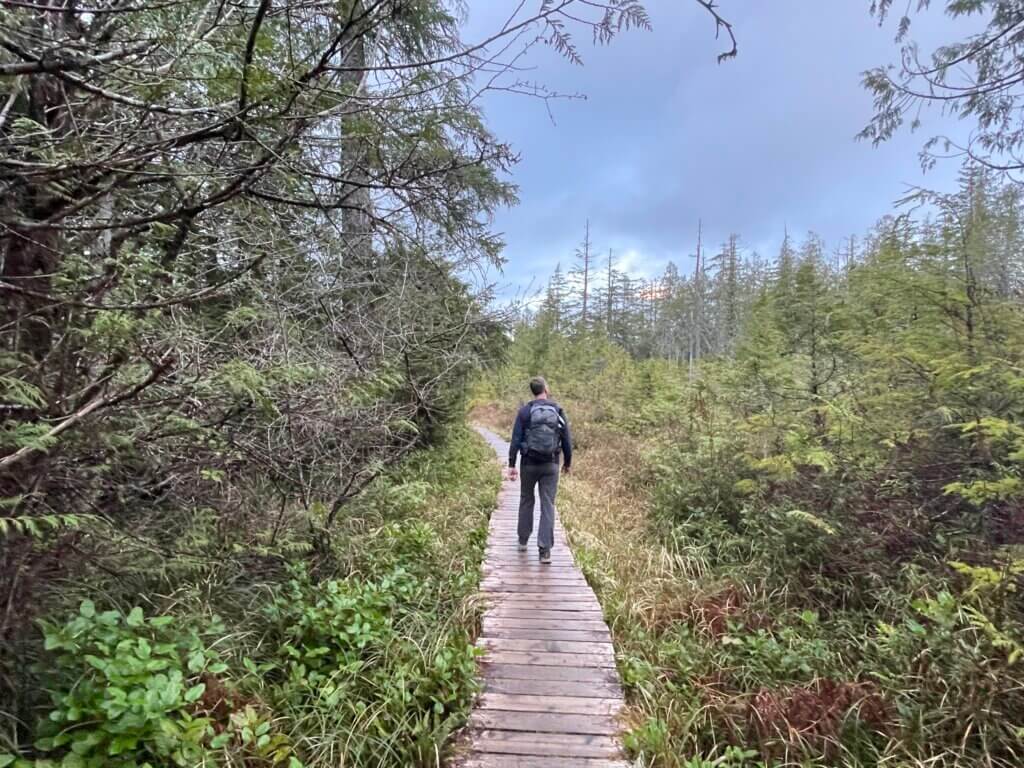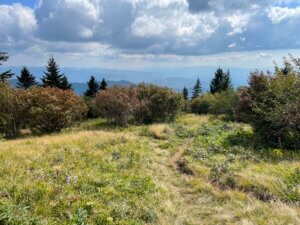*This post contains affiliate links, if you click a link I make a small commission and you help support the blog
Olympic National Park is consistently ranked as one of the top national parks in the United States. It is also one of the quietest places on earth, with the least amount of air traffic and surrounding human made noise. Making it one of the best places to truly getaway and into nature.
There’s a lot of things to consider when planning your trip to this incredibly diverse park, from experiencing old-growth forest to seeing the Pacific Ocean. Whatever your plans this is your ultimate guide to help you plan your trip to one of the three national parks in Washington state.
Getting to Olympic National Park
The closest airport to the Olympic Peninsula is the Seattle-Tacoma international airport. From there you can rent a car and drive the 2-3 hour drive to the park entrance. There are multiple park entrances depending on where you plan to go with the park being a bit piecemeal. There is a strip along the coast and then the main park located centrally, surrounded by national forest and tribal lands.
You can also arrive by ferry from Vancouver Island to Port Angeles. There are other ferries that will bring you to the Olympic peninsula from Seattle as well, including the Edmonds to Kingston ferry, which is the most popular way to get there.
In peak season, wait times for the Edmonds-Kingston ferry can be hours, so be prepared to either sit and wait or drive around. The time it takes to drive around to Seattle from the Olympic National Park is roughly the same to take the ferry, assuming you catch the ferry at the right time and aren’t forced to wait for the next one.
Weather and tide conditions
Olympic National Park, and the Olympic Peninsula in general, is one of the rainiest places in North America. To avoid the rainiest season, the summer months are the best time to visit. However, it is also the busiest, with hordes of people crowding the trails and scenic areas.
The park is open year-round, though in the winter months you can expect significantly more rain and snow in the mountains. Check the National Park Service website before you visit to see which roads, trails and camping areas might be closed due to weather.
I recommend visiting in the shoulder season, like early to late spring and in the fall. There will be significantly less people and if you can time it right and have a good weather window, you can experience the solitude and beauty of this park without anyone around. And even if it does rain, it is a temperate rainforest, so it only adds to the interest.
If you are planning to visit the coast and hope to hike along the beach, make sure you check the tide tables to visit at low tide. Not paying attention to the tides can be dangerous and there are areas that do not allow easy escape to higher ground. In the off season, there is not a lot of staff available, and cellphone service is minimal to non-existent, so rescue can be difficult.
Where to stay
There are a multitude of campgrounds and primitive backcountry sites within the park. There are also campgrounds on tribal lands along the coast. These require permits that can often be purchased at stores upon entry onto tribal lands.
If camping isn’t really your thing, the town of Forks is perfectly situated between the coastal section of Olympic National Park and the interior portion of the park and main parking lot for the Hoh Rainforest. There is also Port Angeles and Sequim (pronounced Squim) along the northern most borders of the park. All of these areas have several hotels, motels and B&Bs.
Wilderness permits and other passes
To enter the park you will need to purchase a park pass or bring your America the Beautiful pass. For now, reservations are not needed for this park, but this could change in the coming years in order to protect these natural areas from damage due to too many visitors as we are seeing in some of the other parks around the country.
If you plan to backcountry camp, you will need to purchase a wilderness permit. These are readily available during the off season but significantly more challenging to get during peak summer season. All of these permits need to be purchased on recreation.gov and you will need to print it and have a copy readily available while you are camping.
Keep in mind that some areas also require bear canisters, it’s a small part of the park, but important to have in a black bear frequented area. Other areas recommend either hanging your food bag or will provide bear wire to hang your bag.
Most popular places to visit
There are so many beautiful places to see in this park and more than you could possibly cover in one visit. I recommend having a plan when you go, keeping the areas you want to visit to one part of the park or another.
For example, when my husband and I visited we took a long weekend and hiked the Hoh Rainforest along the Hoh River trail to Lewis Meadow, camped, and then hiked out. We then went to Forks for the night and the next morning drove to Ozette and day hiked the Ozette triangle, giving us a taste of both the temperate rainforest and the Pacific Ocean.
Below are some of the most popular spots to visit around the park (and most recommended)
Shi Shi beach
This is a popular spot for camping on the beach. There is a great stretch of sand for tents, compared to the Ozette triangle area where most of the camping is up off the beach in little tree alcoves (also awesome). You will need a wilderness permit to camp on Shi Shi beach and there is a river crossing to get to the beach, which can be impassable during winter months due to high water.
Cape Flattery
This is the furthest northwest tip of the United States located on Makah tribal lands at Neah Bay. The Cape Flattery trail is only 0.75 miles long to the overlook, but you do need a recreation permit to visit. Dogs are allowed on this trail but must be leashed at all times.
Hurricane Ridge
This is a great place to drive to and see the mountains in all directions. It’s the perfect scenic drive, spanning 17 miles from Port Angeles. The road is open daily during the summer but only open Friday through Sunday, weather permitting through the winter. Stop at the Hurricane ridge visitor center for the most up to date conditions.
Rialto beach
A popular public beach it is close to the Hole-in-the-Wall attraction and has some of the same things you can find in the other beaches mentioned above. It is more south, so if you are planning to start from the south and travel north towards Cape Flattery this is a great place to stop, with the Mora Campground next door.
Tree of Life
Located in the Kalaloch campground on the beach, this is one of those natural wonders you shouldn’t miss. It’s one of the most photographed sites in the Olympic National Park and a quick stop along the scenic coastal drive.
Hall of Mosses
Located in the Hoh Rainforest, at the start of the Hoh River trail, is the famous Hall of Mosses. This short 0.8 mile loop takes you through the best of the temperate rainforest with mosses hanging from branches and hugging tree trunks. It’s so green and so magical it is a must see and everyone knows it.
During the summer months this can get incredibly crowded, so if you are able, go in the off season. The rain adds to the ambiance, trust me.
Best hikes
Deciding what to hike can be a challenge. You need to decide if you want a coastal trail to explore some of the amazing marine life or if you are looking to have incredible views from the higher elevations on Mount Olympus and the other Olympic Mountains.
Bear in mind that none of the trails within the Olympic National Park are dog friendly. If you would like to bring your four-legged friend or friends with you, I recommend checking out the Olympic National Forest that surrounds the park. All national forests are dog friendly and the hiking, honestly can be just as spectacular if you know where to go. I recommend checking out Marmot Pass as a starting point.
Below are two of the most recommended and best hikes in the park to get you started
Hoh River Trail
This hike was one of the best hikes I have ever done. You can hike in as far as you want, all the way to Glacier Meadows and blue glacier at the edge of Mount Olympus or anywhere in between.
We hiked the 10.5 miles in to Lewis Meadow and was not disappointed. Beyond Lewis Meadow the trail quickly begins to gain elevation in a short time and is the hardest part of the trail. Before this it is an easy hike, that is mostly flat with several stream crossings.
For more, check out my trail guide on the Hoh River trail.
Ozette Triangle Loop Trail
The Ozette Triangle loop is one of those really unique hiking trails. Broken into three sections, the first and third sections take you through forest and bog on mostly boardwalk and flat trail, while the middle section takes you along the beach. The majority of people hike this trail for the beach section.
On this trail you have the opportunity to see the famous sea stacks, explore tide pools, and see an amazing array of marine and terrestrial wildlife. In total, this easy trail is 9.4 miles long.
For more, check out my trail guide on the Ozette triangle loop trail.
Concluding Thoughts
The best way to explore this part is to go on foot during the shoulder season. Here you have the opportunity to take your time without worrying about the crowds.
I highly recommend planning your trip to see both the coastal areas and the interior region of the park.

